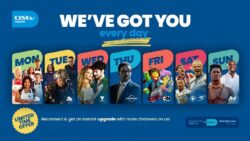By J. N. Halm
Wait equals waste. That’s exactly how many people think. It might not necessarily be true. Sometimes, to get the very best, one has to be patient enough to wait. But tell that to today’s customer. Make the customer of today wait for too long and you risk losing the one’s business. Studies show that half of all customers will not wait more than three minutes in a store. Speed is the name of the customer service game.
It is not as if the need for quick service just started a couple of years ago. For decades, customers have always wanted to be served as quickly as possible. Speed has always been an important dimension of service quality. As far back as 1988, psychologists A. Parasurman, Valarie Zeithaml, and Leonard L. Berry developed the RATER framework from their SERVQUAL study. One of the two Rs within the RATER Model is Responsiveness—the promptness by which customers receive service. Evidently, customers have always wanted to be served quickly. (By the way, the other R is Reliability).
Parasurman and his colleagues were touching on responsiveness in a time before we had fast-paced internet. This need has however become even more ramped up in this day and age. Today’s customers are super-impatient. They do not have too much time to wait (or waste). There is a study that indicated that more than 50% of customers hired service providers simply based on who responded first to their request for service. Recent studies show that two-thirds of today’s customers will rate speed of service to be as important as price.
Several studies confirm that consumers consider delivery times, along with delivery costs and product prices, among the most significant factors influencing their online purchase decisions. Other studies show that customers are very particular about the exact time they receive their deliveries. When a business advertises a specific time by which it will deliver, customers will hold the business by its word. Accuracy of delivery means a lot to today’s customers. If the business promises that a delivery would be within thirty minutes that would be exactly what the customer would look forward to.
The importance of speed is why businesses should be very careful when making promises regarding delivery time. Communicated delivery times are of such importance that they affect the fortunes of many businesses, especially those that operate in the sector of the economy referred to as “Quick Commerce” or Q-commerce. For these businesses, speed is everything.
By way of definition, Quick Commerce businesses are those businesses that operate exclusively according to speedy deliveries. They are meant to meet the instant needs of customers. A customer who needs a quick meal before rushing out for a meeting has a need that has to be met in a matter of minutes. Therefore, a typical Q-commerce delivery therefore occurs within an hour (or half an hour) of the customer placing an order.
Many Q-commerce businesses operate fast food deliveries and they are mostly powered by advanced technology. Aside meals, groceries, convenience products, household items, and fast-moving consumer goods are some of the other typical product categories that Q-commerce businesses deal in. It is important to realise the role COVID-19 played in the proliferation of these businesses. Since the pandemic, these businesses have become a normal part of the business landscape. In Ghana, Bolt Food, Jumia Food, UberEats, and Glovo*, the Spain-based delivery app, are some examples of Q-commerce businesses.
Although, it is expected of Q-commerce businesses to deliver as speedily as they promise, it has been found that their influence goes further. There is a study that showed that 71% of today’s customers say that Q-commerce businesses have influenced their expectations of how purchases should be delivered. Customers of today have become so used to the speed of on-demand delivery businesses that these customers have become “spoilt” with speed. It has been found in a 2019 study that more than 30% of customers today expect even faster delivery due to their dealings with Q-commerce businesses.
A recent study published in the March 2024 online edition Journal of Service Research found that not serving customers quickly can have dire consequences for businesses. The study was titled “The Effect of Delivery Time on Repurchase Behavior in Quick Commerce.” Using data from deliveries done with online customer orders from a large Western European food delivery service, the researchers found that the longer it took for customers to receive their orders, the longer time it took for customers to make the next repurchase from that same business. The researchers used the term “interpurchase time” which refers to “the time between two consecutive orders placed by a customer.” When customers receive their orders earlier, they tend to make consecutive return purchases quicker. In other words, interpurchase time was shorter for quicker deliveries.
The study also found that late deliveries had more of an impact on the repurchase behaviours of customers than early deliveries. The study found that customer satisfaction (or dissatisfaction) was the reason why customer repurchase was affected by the early (or late) deliveries. When a customer is informed of a time of delivery, the customer’s expectations are set and the one’s mind is locked onto that expected time of delivery. Any deviation therefore puts the customer in a state of anxiety. For instance, a delay in the delivery means the customer has to wait and that would affect whatever plans the customer has for that period. In short, the customer’s time may be wasted while waiting for a delivery.
The thing about wasting a customer’s time is that it tells customers that the business does not care about them, their time or their money. With so much to do with so little time, today’s customers value their time. They so treasure their time and therefore place a high premium on time. Wasting a customer’s time therefore gives an impression that that particular customer is dispensable for the business. For such a customer, taking his or her business elsewhere is not a very complicated matter.
Interestingly, it has been found that when customers expect delivery at a certain specific time as promised by the business, they plan with that time in mind. In that vein, it has been found that earlier than expected delivery times are not as appreciated as in traditional businesses. A quick business gets no extra marks or credits for delivering quicker than expected. However, a quick business loses so much for not delivering on time.
Businesses know that their chances of survival and the potential for their growth and expansion are tied to the behaviour of their return customers. The business whose customers keep coming back is the one that will eventually end up leading in the market. If the ongoing discussion on the above-referred study is anything to go by, then businesses must ensure that they do not take the speed of service delivery for granted. When customers require service, it has been proven that the business that responds first has a great advantage.
One of the key implications of the findings of the above-referred study was that rather than placing their efforts and resources into making deliveries faster, Q-commerce businesses were better off ensuring that they reduce the number of late deliveries. This is because, as observed earlier, beyond a certain time limit, customers were not too impressed with how quickly deliveries were done. However, customers become a lot more disappointed beyond a certain period when deliveries are delayed. In other words, late deliveries were much more irritating than early deliveries were impressive.
The lessons from the aforementioned studies extend beyond just Q-commerce businesses. Every business must appreciate the fact that today’s customers have become “spoilt with speed”. Therefore, the necessary investments must be made to ensure that customers are not made to wait unnecessarily. However, it is also important to note that any investment in speed pays off.
Some studies found that customers would pay an average of 19% more for “always immediate service”. Customers indeed put a premium on speed. It has also been found that 27% of customers are more likely to spend money when the brand responds faster than expected. In other words, the business that ensures that its customers are not made to wait in line or put on hold for long are those that would make more money.
In conclusion, it is important to recognise that there is a difference between traditional e-commerce and Quick Commerce. Every business leader must know and appreciate this fact. By its very definition, it is clear that Quick Commerce is quick. Whereas traditional e-commerce can give customers days or even weeks to receive their orders, Q-commerce is a matter of minutes or at most an hour. Therefore, customers will have different expectations for these business models. Businesses must therefore ensure that they appreciate the differences and act accordingly.
Approaching Q-commerce with a traditional e-commerce mindset would surely result in disaster. Such a business would not last in the market. When customers are primed for “quick service”, anything less than that would not be forgiven. A business that is not equipped and prepared to provide quick service should not even attempt to go near this business. Because when it comes to Q-commerce, Q is truly for Quick!
(*At the time of writing, Glovo had ceased operations in Ghana.)










